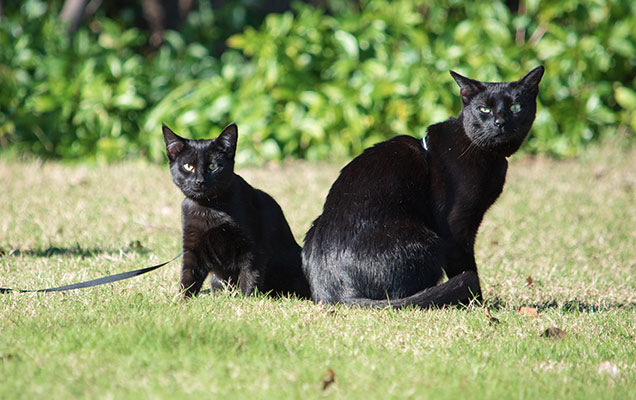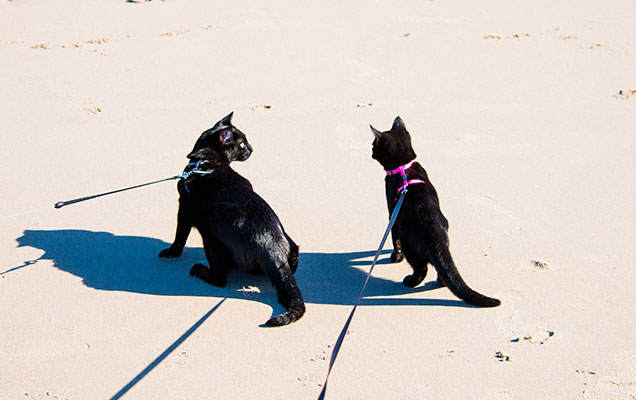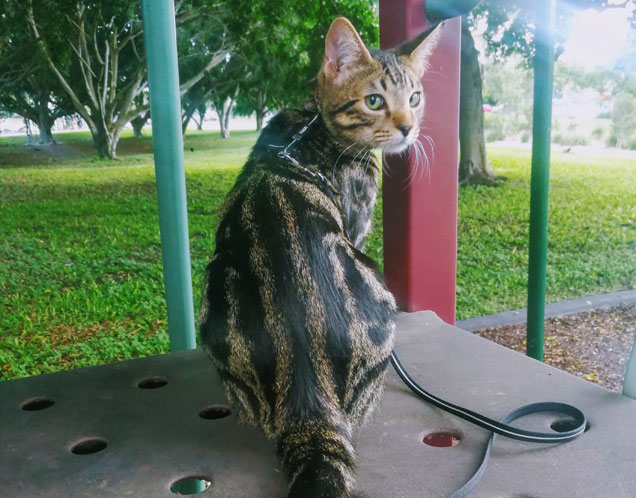Whilst we’re out at work or school, our cats might be spending a lot of time indoors by themselves. Without a lot of stimulation your kitty can be prone to boredom (and prone to taking it out on your couch). Being able to take your cat with you outdoors is a great way to provide them with the stimulation they crave, ensure they’re getting enough exercise, and provide an opportunity to for you to spend more quality time with your feline friend. With harness training your cat, they can experience all the sights, sounds, and smells of the great outdoors in a way that’s safe for them, and your local wildlife.
Want to train your cat to walk on a lead but don’t know where to start? We’ve compiled some of our top tips to set your feline up for success!- Shop Online
- News & Events
- Blog
- Contact
- Seen an animal in distress? Call 1300 ANIMAL(264 625)
-




 RSPCA adopted cat Pickle learning to explore outside safely from a young age.
RSPCA adopted cat Pickle learning to explore outside safely from a young age.

